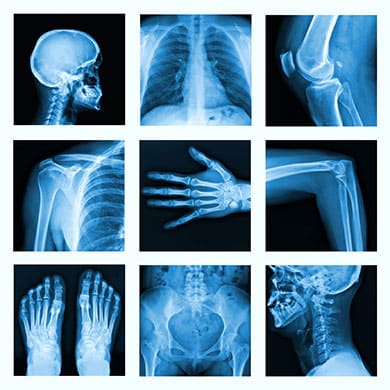How Does X-Ray Actually Work?
Overview

Healthcare providers use X-rays to help diagnose conditions like bone fractures, arthritis, lung infections, spine issues, and dental problems.
What Exactly is an X-ray?
An X-ray is a medical imaging technique that utilizes radiation to create internal images of your body. While we often associate X-rays with detecting broken bones or examining teeth, they are also valuable for diagnosing a wide range of medical conditions, disorders, and diseases.
Typically, the term “X-ray” refers to a single radiograph (a single image), but it’s also the type of radiation used in imaging machines to produce pictures. X-ray technology is also employed in other imaging procedures, such as CT scans, which generate multiple images interpreted by a computer to form three-dimensional visuals. This article will focus on plain X-rays.
What is an X-ray with Contrast Material?
Some X-rays require contrast agents (dye or contrast material) to make certain body structures more visible. The contrast material might come in the form of a liquid, powder, or pill, and it is given before the X-ray procedure. Depending on the type of X-ray, you may receive the contrast material in one of the following ways:
- Orally (by mouth)
- Through an intravenous (IV) injection or into cerebrospinal fluid
- Through a rectal insertion (enema)
When Are X-rays Necessary?
Your healthcare provider might recommend an X-ray to:
- Check for broken bones (fractures)
- Investigate the cause of symptoms like pain or swelling
- Examine for lung infections
- Detect foreign objects inside your body
- Identify structural problems in bones, joints, or soft tissues
- Help plan and evaluate treatments
What Can an X-ray Reveal?
X-rays can show various medical conditions, including:
- Arthritis
- Fractures
- Abnormal bone changes
- Herniated discs in the spine
- Infections
- Kidney stones
- Scoliosis and other spinal abnormalities
- Tooth cavities
- Tumors
However, not all abnormalities are visible on an X-ray, so conditions like kidney stones or tumors may not always appear, even if they are present.
Can X-rays Detect Cancer?
While X-rays can reveal certain cancers, they are not the primary tool for detecting or diagnosing most types of cancer. Tumors within organs may be small or concealed behind other structures, such as the ribs, which makes them harder to detect during a chest X-ray.
Types of X-rays
There are different types of X-rays used to capture images of various body areas. Some common X-rays include:
- Abdominal X-ray: Evaluates the digestive system and helps diagnose conditions like kidney and bladder stones.
- Bone X-ray: Used when a fracture, dislocated joint, or arthritis is suspected. It can also show signs of bone infections or cancer.
- Chest X-ray: Ordered if you have symptoms like chest pain, shortness of breath, or persistent coughing.
- Dental X-ray: Regularly used by dentists to check for dental issues such as cavities or gum disease.
- Head X-ray: Helps identify skull fractures from injuries or conditions that affect skull bone formation, like craniosynostosis.
- Spine X-ray: Used to assess spine curvature, slipped discs, or other spinal issues.
Other medical imaging methods use a series of X-rays and computer interpretation to create detailed pictures, including:
- Bone density (DXA) scan
- CT scan (computed tomography)
- Fluoroscopy
- Mammogram
How Do X-rays Work?
X-rays function by emitting radiation through your body, which then strikes a detector to produce an image. You cannot feel the radiation, as it is invisible.
Different tissues in your body absorb radiation in various ways. Dense objects, like bones, absorb more radiation and appear bright white in the image. Softer tissues, such as organs, absorb less radiation and appear in different shades of gray.
A radiologist will review the X-ray image and prepare a report for your physician, pointing out any abnormal or concerning findings.